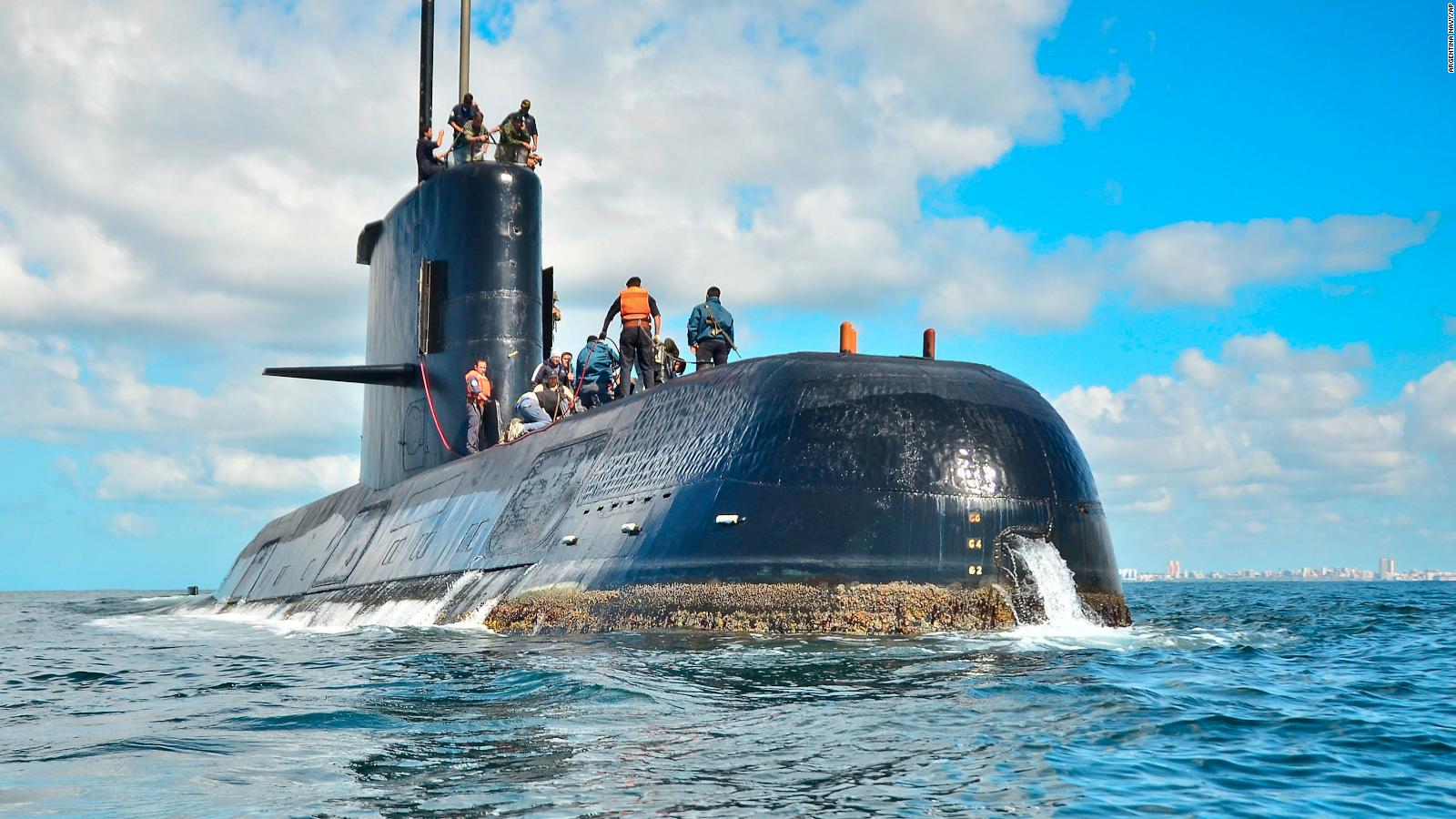Argentina's missing submarine: What we know
How often would the crew usually be in contact?
From
a crew comfort point of view the sub would very likely travel submerged
around 50 meters (165 feet) below the surface, Layton says, only coming
near the surface to "snort" -- replenish its oxygen, recharge the
batteries by using the diesel engines, and send radio signals -- around
once every 24 hours.
However,
that could depend on whether it was a straightforward transit or if the
sub was engaging in other operations en route, Euan Graham, director,
international security, of the Lowy Institute for International Policy
in Sydney told CNN.
"Obviously the
Falkland Islands are an intelligence target for Argentina," he said.
"There is no reason to suggest that it was engaged in this but still a
possibility. If so it would need to stay out of detection envelope."
How hard is it to find a sunken sub?
Finding
a vessel that is designed not to be found is more difficult "by an
order of magnitude" than a surface vessel, Graham said.
"In
general terms they're designed to be stealthy platforms," he said.
"They are difficult to detect underwater... by an order of magnitude."
Finding large objects on the sea bed is problematic, Layton said.
They are usually found by listening passively to hear the engines, or by active sonar.
"If
you're sitting at bottom of ocean, you're probably not making a lot of
noise," Layton said. "You can't recharge oxygen, can't run too much
equipment."
Sonar is only really effective when you're looking for a sub "between the sea floor and the surface," he added.
"What you need is something that maps the sea floor," similar to the devices used in the MH370 search, he said.
What sort of shape is the sub in?
The
San Juan is an old diesel submarine, built in Germany in the mid-1980s,
but was refitted with new engines and batteries around five years ago,
Graham said.
The hull dates back to 1985, but due to the recent refit "it shouldn't lose electric power catastrophically," he said.
"A total loss of power is highly unusual as redundancy is (factored in) to naval designs."
Because
of the expansion and contraction of the hull as it ascends and descends
deep below the ocean's surface, the sub is designed to have a shelf
life of around 30 years. That shelf life has expired, Layton said.
Assuming
the hull is still intact, it can withstand ocean depths up to around
500-600 meters -- German-made subs set the crush depth at double their
test depth, which is set at 300 meters, Layton says.
If
it's resting on Argentina's continental shelf, it is likely in waters
shallower than this, but if it's further into the Atlantic Ocean it
likely sank below its "crush depth" -- the depth at which the hull
buckles under pressure.
Is anything hampering search efforts?
Southern Argentina's Patagonia coast is notorious for strong storms.
"Currently
a powerful low-pressure system is causing wind gusts in excess of 70
kph (around 45 mph) and churning up the South Atlantic Ocean with swells
equivalent to a two-story building. This weather will hamper the search
efforts for at least the next 48 hours," CNN meteorologist Derek Van
Dam said.
Given the submarines range, the search area could comprise "thousands of square kilometers," said Layton.
"If satellite signals are from sub this whittles things down, gives (search and rescue) a great chance."
Can't they send another submarine to find it?
"What
is needed is what is in the area, above all, boats with multi-beam
sonar, to be able to do the search properly," Argentine naval captain
Hector Alonso said.
"Sending a
submarine to the area to perform some type of search wouldn't add
anything because they don't have the technology or the elements to be
able to do an underwater search."
However,
at least one specialist rescue sub will be required if the San Juan is
found with the crew still alive. The US is sending a rescue submersible
to the area to help if needed.
Assuming the sub is found, how will crew members be rescued?
Even
if the sub is located it could take several days to get a rescue vessel
there, Graham said. This is problematic when oxygen supplies are
diminishing, especially when surface conditions are so rough.
"It's
difficult to operate in 8-meter (26 feet) waves," he said. Adding to
the difficulties of a rescue, we currently "don't know what depth it is
located, (and) how precarious the state of the hull could be."
The condition of the sub, assuming its resting on the continental shelf, is also of key concern.
"The
sunk submarine needs to be sitting upright -- or nearly so -- on the
sea floor so the rescue hatch(es) can be easily reached and docked
with," Layton said. "The sea floor, though, is not flat. If the
submarine is lying at an acute angle, docking could be hard."
Reed says that the US' Pressurized Rescue Module (PRM) rescue sub "can dock with a (disabled submarine) up to a 45˚ angle."


